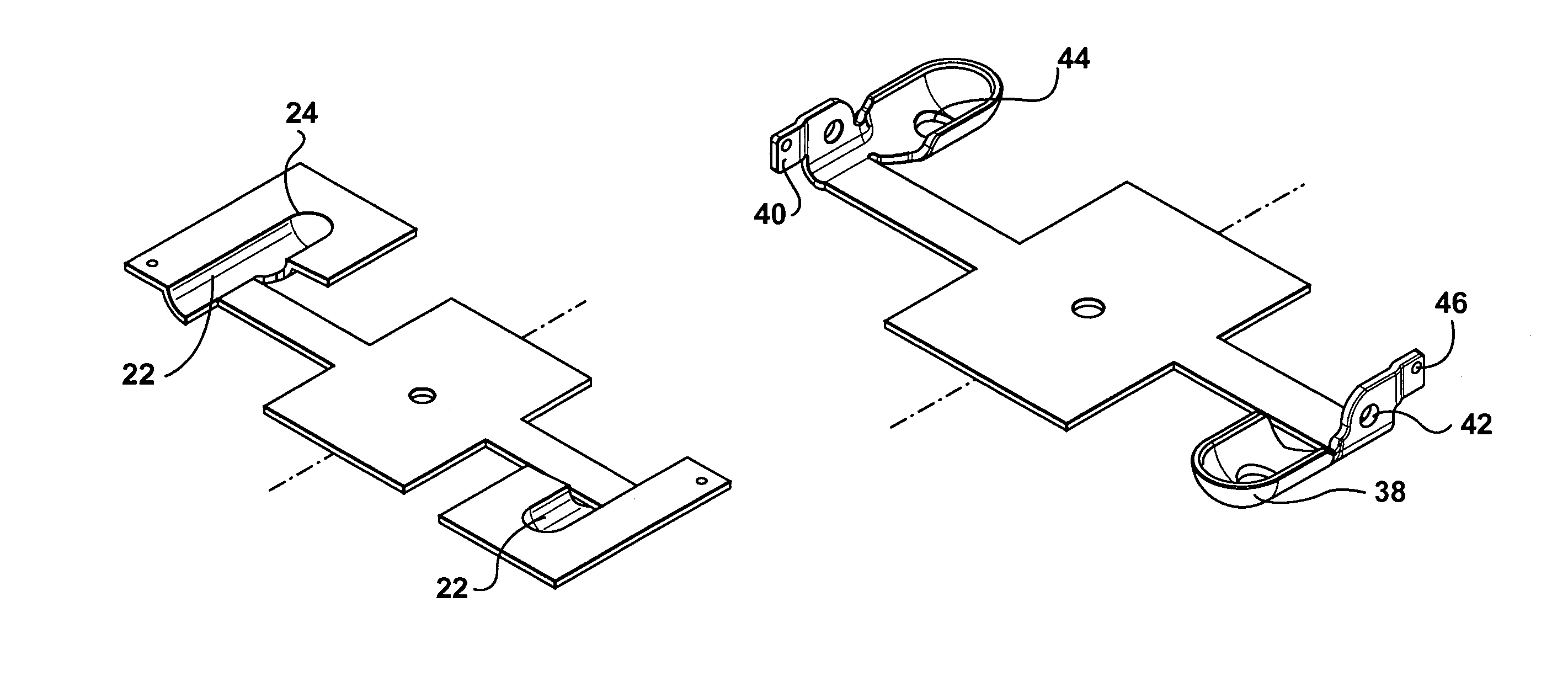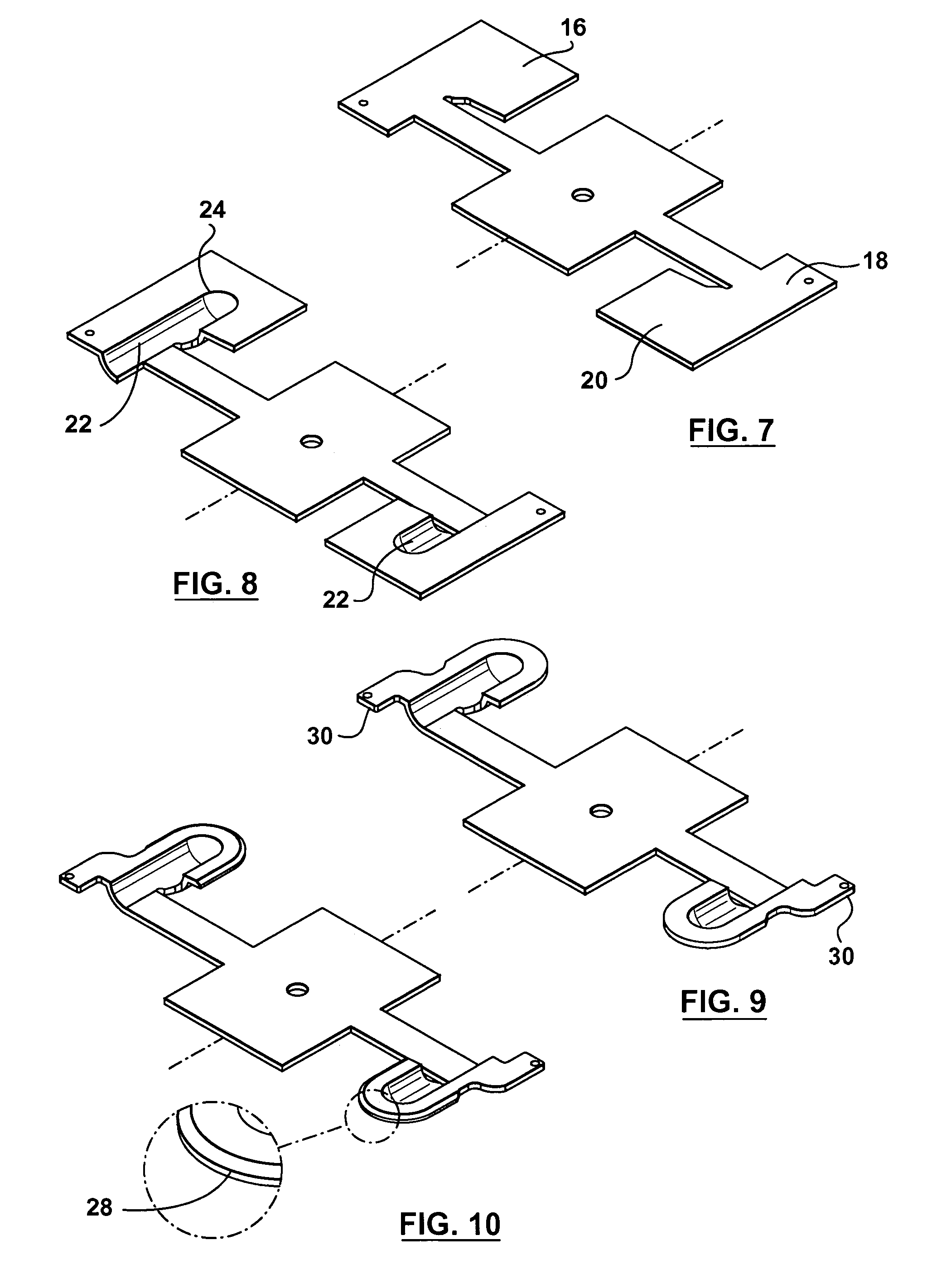Method of manufacturing a stamped biopsy forceps jaw
a biopsy and jaw technology, applied in the field of endoscopic instruments, can solve the problems of reducing the capacity of the jaw, reducing the quality of the jaw, and not producing jaws with thin or very thin sections, so as to eliminate the overbite, improve the repeatability of the thickness of the arm, and eliminate the effect of lateral shi
- Summary
- Abstract
- Description
- Claims
- Application Information
AI Technical Summary
Benefits of technology
Problems solved by technology
Method used
Image
Examples
Embodiment Construction
[0035]In accordance with the preferred embodiment of the preferred invention there is provided a method of progressive die stamping for manufacturing a biopsy forceps jaw. Referring to FIGS. 7–9, the method may comprise of the following steps of initially cutting a sheet 10 of metal into a strip 12. The strip of metal 12 may then be punched with a series of guide holes 14. The guide holes ensure accurate positioning of the strip of metal 12 in the progressive die (not shown) during the stamping and drawing process, or press working processes in general.
[0036]A shape 16 that is larger than the actual pattern of the biopsy forceps jaw is then cut or defined into the strip of metal 12. At this juncture in the method, the shape is still attached to the strip of metal. The shape 16 may have a proximal end 18 that is attached to the strip of metal 12 and a distal end 20.
[0037]The next step in the process involves drawing a concave shaped cup portion 22 of the biopsy forceps jaw. In genera...
PUM
| Property | Measurement | Unit |
|---|---|---|
| shape | aaaaa | aaaaa |
| size | aaaaa | aaaaa |
| shrinkage | aaaaa | aaaaa |
Abstract
Description
Claims
Application Information
 Login to View More
Login to View More - R&D
- Intellectual Property
- Life Sciences
- Materials
- Tech Scout
- Unparalleled Data Quality
- Higher Quality Content
- 60% Fewer Hallucinations
Browse by: Latest US Patents, China's latest patents, Technical Efficacy Thesaurus, Application Domain, Technology Topic, Popular Technical Reports.
© 2025 PatSnap. All rights reserved.Legal|Privacy policy|Modern Slavery Act Transparency Statement|Sitemap|About US| Contact US: help@patsnap.com



